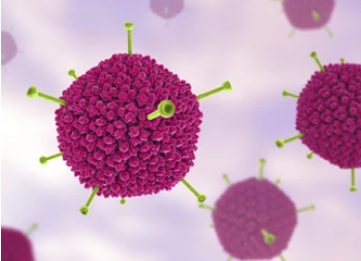Multi-Omics in Adenovirus Infection
Human adenoviruses (HAdVs) are common human pathogens that can cause a variety of diseases, such as ocular, respiratory, and gastrointestinal diseases. HAdVs reprogram host-cell gene expression as well as fine-tune viral gene expression in a temporal manner to achieve their effective lytic mode of replication. Thanks to the advent of multi-omics approaches, characterization of HAdV and host cell interference with the unprecedented resolution is possible.
Human adenoviruses (HAdVs)

HAdVs are double-stranded DNA viruses that can infect many cell types. In general, HAdV has a short life cycle but has the ability to effectively lyse host cells. The efficient mode of viral replication is attributed to HAdVs' ability to encode viral factors that reprogram host cells and viral gene expression pathways. For example, viral E1A proteins (289R and 243R in HAdV-5) can interact with many cellular proteins to alter their functions, involving transcription factors, members of the Mediator complex, and cofactors. Therefore, the E1A protein can control the transcription of both viral and cellular genes in an efficient manner. Moreover, viral E1B-55K/E4orf6 complex quantitatively changes host-cell proteome by inducing proteasomal degradation of multiple cellular proteins. VA RNAI and VA RNAII are two virus-associated noncoding RNAs encoded by HAdVs that can interfere with the cellular microRNA (miRNA) biosynthesis as well as the innate immune response.
Application of multi-omics to HAdVs
Transcriptomics of HAdV-infected cells
With high-throughput RNA sequencing (RNA-Seq) technologies, the whole-cell transcriptome of IMR-90 cells infected with HAdV-2 was further investigated. The transcriptome changes of both coding and non-coding RNAs were revealed, including 3556 host mRNAs identified as differentially expressed. Most of the genes (90%) were associated with antiviral response, cellular signaling, and cellular proliferation. Although the identification of differentially expressed genes is affected by the experimental conditions, cell line, and the virus type, there are still some common sets of genes identified in different experiments. For instance, CDC25A is a cell cycle regulatory gene that is up-regulated in HAdV-2-infected IMR-90 cells as well as in HAdV-5-infected HeLa and HBEC.
Proteomics of HAdV-infected cells
Using MS analysis combined with stable isotope labeling of amino acids in cell culture (SILAC), the temporal expression protein changes of IMR-90 cells infected with HAdV-2 were detected. Among them, 1153 proteins were identified as differentially expressed, and they were involved in antiviral immune response, cell cycle regulation, cell growth control, protein synthesis, and so on. Moreover, other quantitative proteomics studies showed that protein abundance was altered in nearly 5900 cells of HADV-5-infected A549 cells.
Correlation between transcriptomics and proteomics profiles
Multi-omics approaches can provide an unprecedented amount of data on virus-host cell interactions, including transcriptomics and proteomics profiles. In general, there is a good correlation between mRNA and protein expression of cellular genes in global analyses. Given that HAdV can directly regulate gene transcription, mRNA stability, mRNA export, as well as protein stability, translation, and activity through different viral proteins and virus-associated noncoding RNAs (VA RNAs). It is not surprising that the correlation between changes in RNA and protein expression in HAdV-2-infected cells is relatively low. To gain insight into how HAVV regulates protein expression during the infection cycle, it is necessary to integrate various RNAs (including miRNA, mRNA, and lncRNA expression) to work together.
In the past decades, multi-omics methods have been applied to study the interaction of HAVV with host cells, which has led to a further understanding of how HAdV-infected cells become reprogrammed during infection. Creative Proteomics is able to provide transcriptomics, proteomics, and metabolomics experiments and multi-omics joint analysis services. Thanks to our long-term experience, high degree of expertise in virus research, and the application of modern technologies, we can provide high-quality and customized service to greatly accelerate our customers' project progress and success. For more information on how we can help you, please feel free to contact us. We'll get back to you in time.
Reference
- Zhao, H., et al. (2020). "Adenovirus in the omics era–A multipronged strategy." FEBS letters, 594(12), 1879-1890.
Related services
* For research use only.

